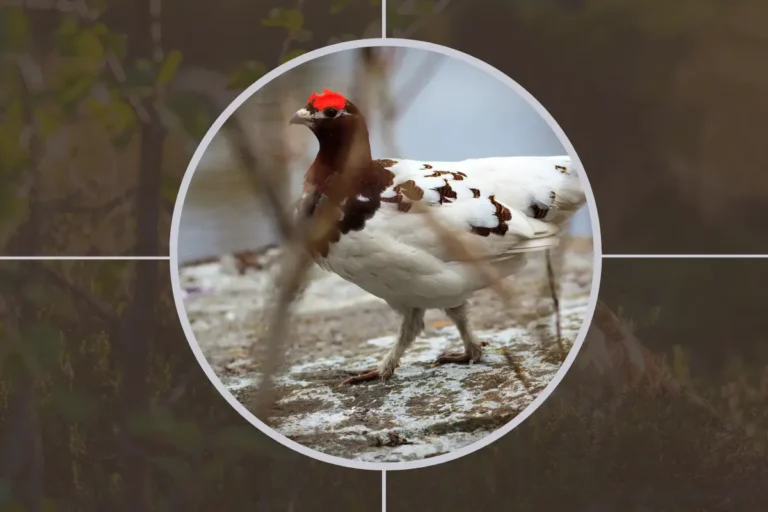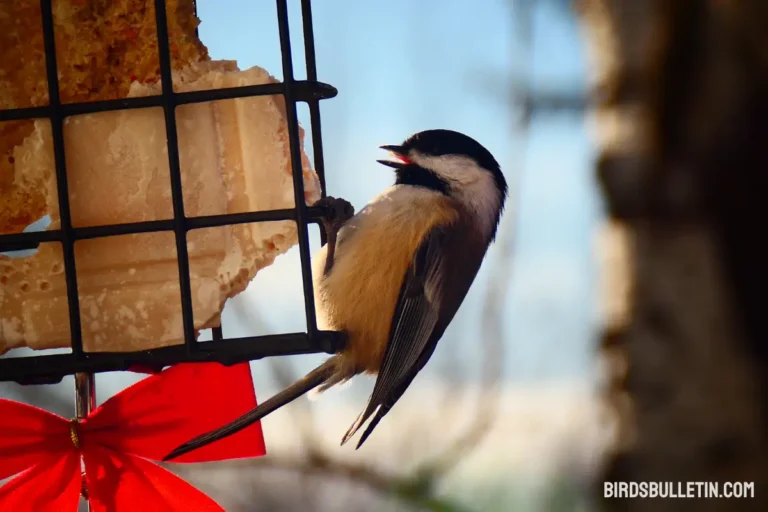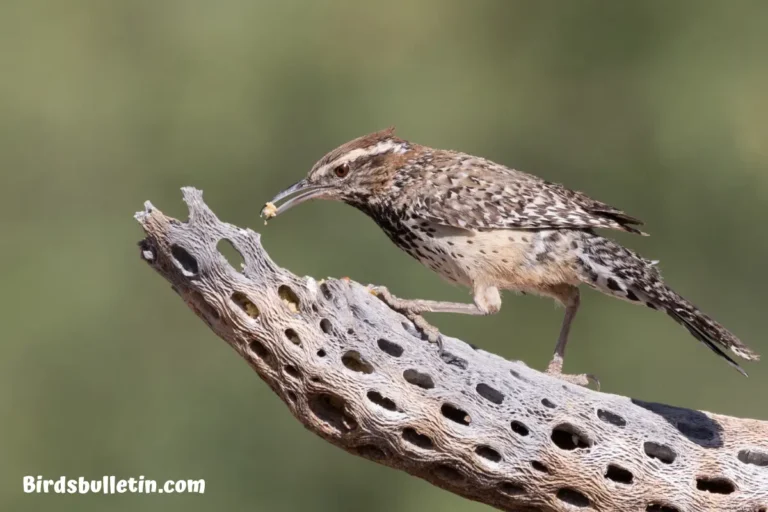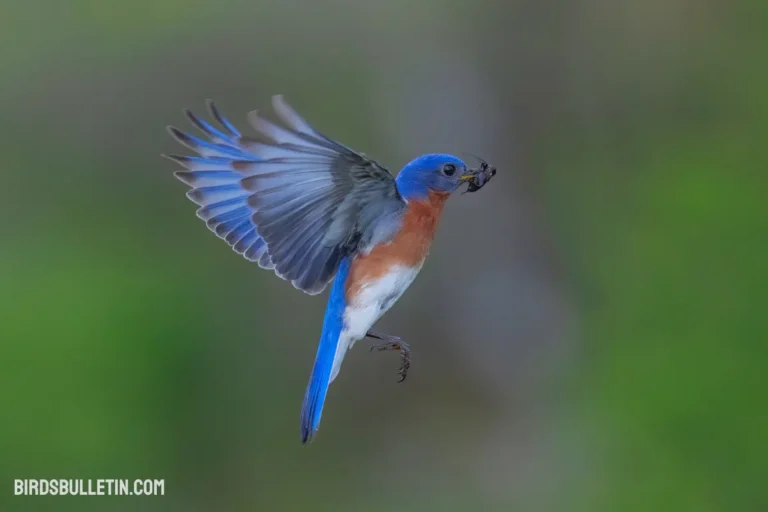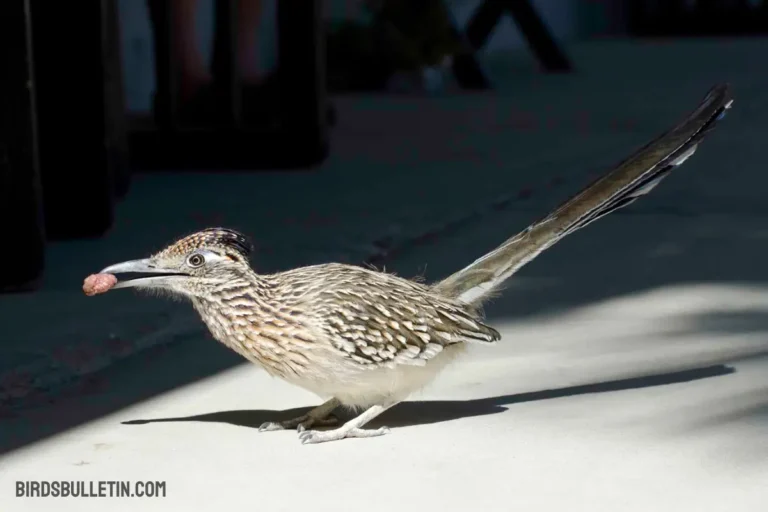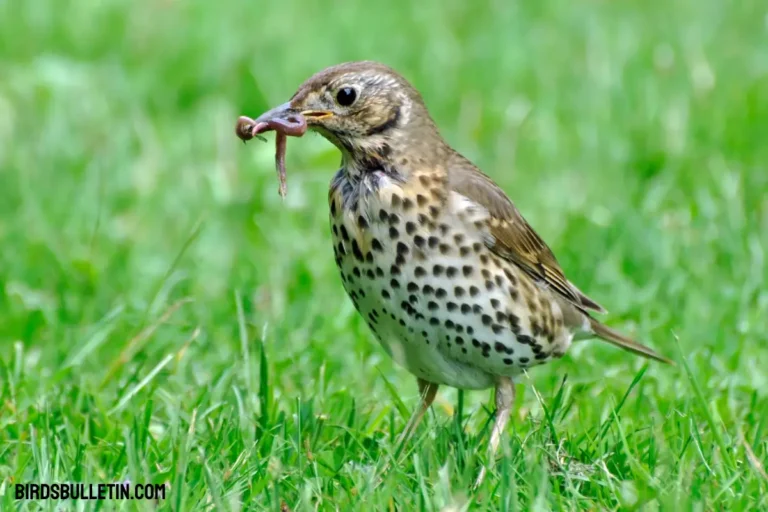What Do California Gulls Eat?
California gulls are a familiar sight along the western coasts of Canada, the United States, and Mexico. These large, adaptable gulls thrive around lakes, rivers, and seashores from Alaska to Central America.
But what sustains them in these varied aquatic habitats? As opportunistic feeders, California gulls consume a diverse diet. They feed on everything from small fish and crustaceans to insects, earthworms, eggs stolen from other bird nests, and even household garbage.
Their dietary flexibility allows them to flourish in both freshwater and marine ecosystems across their range. Read on to learn more about what comprises a California gull’s expansive palate.
Looking for more articles about birds’ food and diet
Favorite California Gull Foods
The California gull diet varies by habitat, season, and availability. On coastal beaches, they subsist largely on marine creatures, while those dwelling inland rely more on terrestrial prey and waste grain and garbage from human activities.
Some of their favorite foods include:
| Food Item | Details |
|---|---|
| Small Fish | |
| Insects | |
| Crabs/Crustaceans | |
| Earthworms | |
| Eggs/Chicks | |
| Refuse/Garbage |
How Often do California Gulls Eat?
California gulls are highly opportunistic feeders that eat whenever food is available. They may gorge when large schools of fish or clouds of swarming insects allow easy access to abundant food.
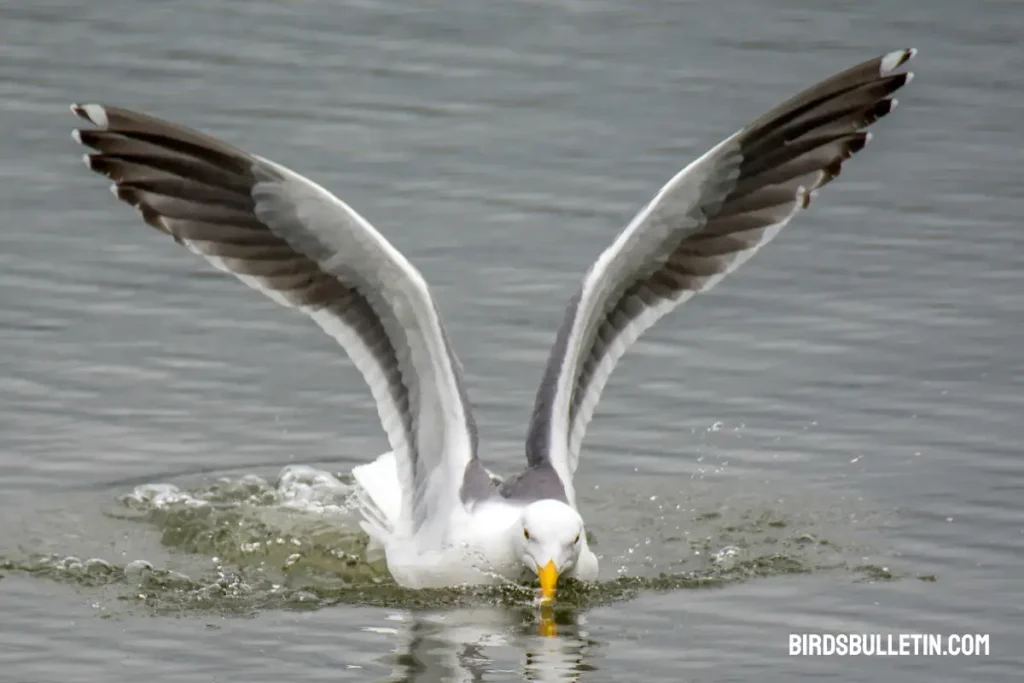
At other times they employ a “search and seize” strategy by scanning the water’s surface for potential prey. Their feeding frequency and intake vary dramatically based on habitat type, season, and other factors.
What Time of Day do California Gulls Feed?
California gulls often patrol shorelines on incoming and outgoing tides to spot exposed prey. They also commonly feed around dusk when small fish and aquatic invertebrates rise toward the surface.
However, since they are skilled at exploiting unpredictable windfalls, they may feed at any hour.
How California Gulls Gather Food?
This resourceful gull utilizes a variety of hunting and feeding strategies:
- Dipping/Surface Feeding: While floating on water or walking/swimming along shorelines, dip down your head to snatch up insects, small fish, and marine worms from the surface.
- Scavenging: Patrol beaches and intertidal zones with other gull species to find fish carcasses and other remains washed up by tides or discarded by humans.
- Hunting Swarms: Cruise over water and swarm irresistibly around concentrations of insects or schools of fish before descending to capture multiple prey.
- Plunging/Wading: Plunge completely below water or wade through wetlands to catch tadpoles, small fish, and aquatic insects.
- Kleptoparasitism: Harass other seabirds to steal their catches of fish mid-air. Also, raid nest colonies to steal eggs.
What California Gulls Eat in Winter?
Along coastal areas, their typical fish and crustacean prey remain available. Further inland where waterways freeze over, they winter around dams, agricultural fields, and wherever waste grains are abundant.
They also subsist more on earthworms and insects around thawed grassy areas. Where food grows especially scarce, they increase raids on other birds’ eggs and chicks.
What Baby California Gulls Eat?
Both parents supply chicks with food, most often in the form of small aquatic animals like fish, crabs, and marine worms. If breeding near garbage dumps, the young are fed refuse.
Adults carry prey to the colony in their bills and regurgitate it for demanding chicks to swallow. Older chicks wander from nests to pick up fragments adults drop during feedings.
Frequently Asked Questions
01. How many eggs do California gulls eat?
They often eat eggs from the nests of other birds. In one study, California gulls were responsible for taking up to 90% of American white pelican eggs from a mixed colony.
02. What fish do California gulls eat?
They feed opportunistically on many small forage fish. Common fish prey include anchovies, herring, silversides, sticklebacks, and smelts.
03. How do California gulls hunt?
They employ many strategies from dipping at the water’s surface and scavenging washed-up remains to plunging below water and stealing catches from other birds in mid-air.
04. Do they only live near water?
No, some flocks live year-round near landfills and agricultural areas where food waste is continually available. But most require aquatic habitats with ample nesting sites.
Wrapping Up
With a remarkably flexible diet, the resourceful California gull flourishes across an expansive range from inland lakes to Pacific and Atlantic coastlines. Their diverse menu includes fish, crustaceans, refuse, eggs stolen from other bird’s nests, insects, earthworms, and more.
Where food is plentiful, colonies grow to impressive sizes, greatly benefitting from human fishing activities and garbage. The opportunistic California gull continues finding sustenance in lakes, rivers, and coastal habitats from Alaska to Central America thanks to its versatile palate.
References
- Emslie, S. D. (2001). California Gull (Larus californicus), version 2.0. In Birds of the World (A. F. Poole and F. B. Gill, Editors). Cornell Lab of Ornithology, Ithaca, NY, USA. Retrieved from https://doi.org/10.2173/bow.calgul.01
- Sibley, D. (2001). The Sibley guide to birds. National Audubon Society.


